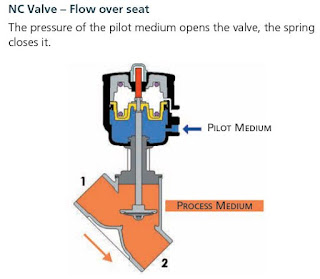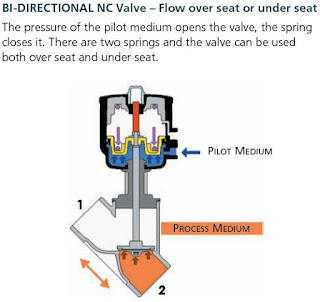Piston Valve Applications: Manufacturing Plastic Compounds
M&M Piston actuated valves can be used in a wide variety of applications, in this next blog posts we are going to provide some examples of an application that they have been used in and the type of valve that we would recommend for the application.
Piston actuated valves used in manufacturing plastic compounds:
The central part of the extruder consists of a cylinder with an endless
screw turning inside.
Once the product is extruded, it is cut (6) and cooled to get its final shape.
The valve that we recommend for this application is:
Piston actuated valves used in manufacturing plastic compounds:
Extrudes are used for blending plastic compounds or
rubbers for industrial use.
The extrusion
technology is widely used in processing plastic materials for manufacturing
pipes, films, covering materials, cables, wires, sheathings, tapes, filaments,
and structural shapes such as doors, windows and shutters.
The hopper (3) sends
spherules of polymer into the cylinder (2) to be warmed up to the melting
point. By an electric motor (1) the endless screw heats and homogenizes the
material, pushing it to the exhaust hole.
During the extrusion
process dispensers (4)-(5) can mix thermoplastic additives, laden, reinforced
or variously coloured materials.
Valves (7),
connected to a cooling unit (8), control cold water at 10° C at the pressure of
2,5 bar to cool the cylinder in the various stages and ensure that the grinding
temperature remains steady.
In the extrusion
lines the exhaust hole has the same shape as the final product to be obtained;
a flat section for films and laminated plastic, a circular section for pipes
and more elaborate sections for structural shapes.
Once the product is extruded, it is cut (6) and cooled to get its final shape.
The valve that we recommend for this application is:
You can view the V-Flow Solutions range of M&M Piston actuated valves here:
V-Flow Solutions: Piston Valves
You can read the rest of V-Flows blogs here.
M&M Angle seat piston valves
M&M piston valves are highly recommended under these conditions:
Technical Information
You can read the rest of V-Flows blogs here.
M&M Angle seat piston valves
M&M piston valves are manufactured in Italy, using the highest quality materials for a high quality product.
M&M piston actuated valves use an external control media to pilot the actuator, where a piston valve is directly connected to the main seal that closes onto the main orifice, thereby controlling the flow of liquids and gases.
- Media containing dirt particles
- Highly viscous media (up to 600 cST (80°E); 1 centistoke = 1 mm2/s)
- High flow volumes
- High temperatures
- Damp environments or hazardous locations
|
|
|
|
|
Technical Information
The main seal material used in piston actuated valves:
A modified PTFE has been used as the main seal material since 2004, when it replaced the original PTFE material seal.
The modified PTFE seal provides these benefits over the previous verision:
- Lower porosity and permeability
- Fewer void spaces
- Higher elasticity
- Reduced deformation under load
- Better chemical resistance to controlled media
- Smoother surface and improved design flexibility
The standard bonnet seals consist of 2 'V'-shaped FKM gaskets and a package of 25% graphite-filled PTFE gaskets.
High temperature Piston actuated valves:
M&M can offer a piston valve that can be used up to 200°C, provided that the valve pressure limits are respected.
The main differences, in regards to the materials in this design, are as follows:
The main differences, in regards to the materials in this design, are as follows:
- Change of the actuator material: From standard PA6 to PA66 filled with 30% fibreglass
- All valves with DN > 25 with fixed plug design (to withstand turbulence caused by steam at high speed)
- Special design of bonnet chevrons, all are made of 25% graphite-filled PTFE
10 Reasons to use a piston actuated valve:










Comments
Post a Comment